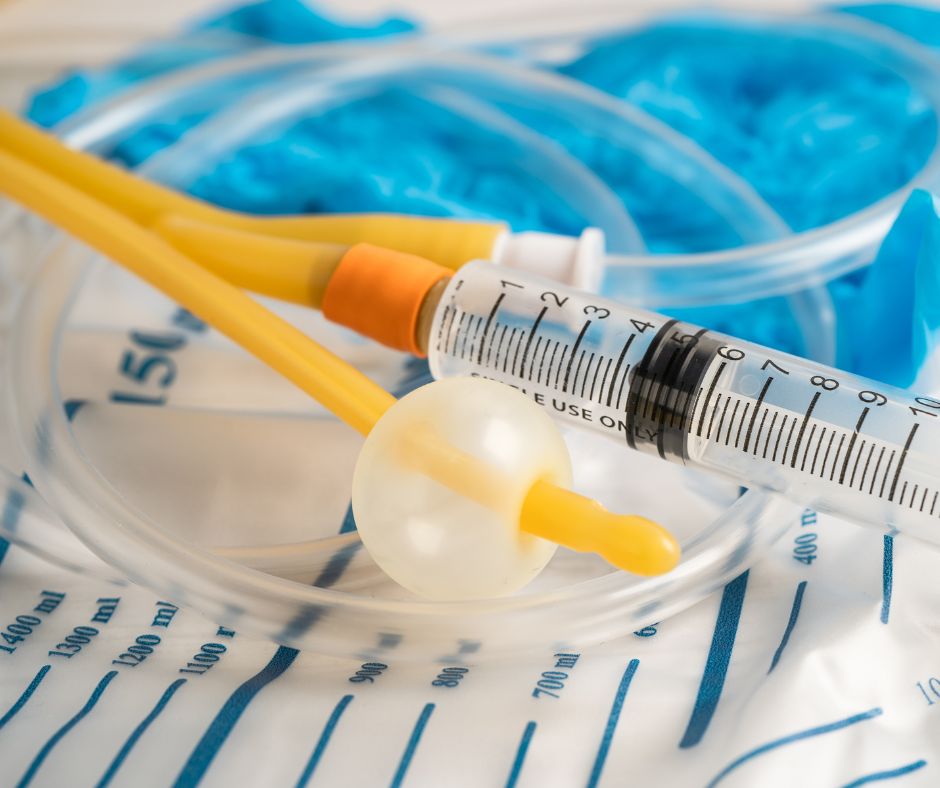When you’re diving into the vast world of intermittent catheters, it’s normal to have a whirlwind of questions buzzing around your brain (and bladder.) While some questions are better left to your urologist, brushing up on the basics can help you find comfort and ease your catheter concerns. Whether you’re a newbie trying to get the hang of it or a seasoned catheter pro wanting a quick refresher, you’re in the right spot. We’ve gathered the top six questions we often hear at America’s Best Care Plus. Let’s unroll the mystery (pun intended) and get straight to the point!
1. What Size Catheter is Right for Me?
Think of catheters like shoes – one size does not fit all. Unlike standard toilets, intermittent catheters come in a range of lengths and sizes to provide custom comfort for every patient. Your healthcare provider will typically recommend a size to start out with, but here’s a quick tidbit: catheters are measured in French sizes (Fr) that reflect the thickness or diameter of the tube. The larger the number, the bigger the diameter. Most intermittent catheters use color-coded funnels to indicate their specific size: white (12Fr), green (14Fr), and orange (16Fr) are the most common.
When it comes to selecting the right size, you should choose the smallest possible diameter that allows proper drainage. For most men, that’s between 14Fr and 16Fr, while most women are more comfortable with a smaller 12Fr. It’s essential the catheter fits comfortably and doesn’t feel too snug or too loose, much like those Goldilocks shoes.
2. How Often Should I Self-Catheterize?
Nobody likes to be tied to the toilet (that’s likely what landed you here in the first place). Unfortunately, timing your cath-room breaks is, once again, not a universal system. Everyone’s bladder capacity and habits differ, and your condition could require more or less frequent cathing than others.
Your urologist will usually suggest a set schedule, which might be anywhere from once every few hours to 4-6 times a day. Following a routine can help reduce the risk of urinary tract infections and accidental bladder leakage, and can also help you feel more in control of your condition.
3. Are there side effects I should expect or watch out for?
Most people can self-cath without issues, but as with any medical procedure, there are potential side effects. Here’s a quick rundown:
- Discomfort or Minor Pain: Initially, you might feel a slight discomfort. It’s your body’s way of saying, “Hey, this is new!” But with practice and the right technique, this usually eases over a few days. Remember, the catheter runway should be smooth. If it’s feeling more like a rocky road, reach out to your healthcare provider.
- Blood in Urine: Seeing a little blood? Don’t panic. Sometimes, the catheter might cause minor trauma. But if this happens frequently, it’s time to consult with your doc.
- Frequent Urinary Tract Infections (UTIs):UTIs are like those unwanted party crashers, always popping up when least expected. They’re also more frequent in patients who use catheters to empty their bladder. Good hygiene and proper cath practices can help reduce your risk.
- Bladder Overdistension: This is a fancy term for an overfilled bladder. If you’re not cathing often enough, your bladder might decide to go on an overstretching spree. Not fun. Stick to your recommended schedule.
If you ever feel like the side effects are crashing your self-cathing, don’t hesitate to reach out to your healthcare provider. They’re there to guide you through the highs and lows, ensuring your catheter journey is smooth, steady, and stress-free.
4. How Can I Avoid Urinary Tract Infections (UTIs)?
UTIs are common in patients who self-cath, but if they’re making regular appearances, your technique might need a little tweak. Always ensure you’re using sterile equipment and proper hygiene. Some tips to help keep bacteria at bay:
- Always wash your hands before and after cathing.
- Use a new, sterile catheter every time.
- Make sure the catheter doesn’t touch any surfaces before insertion.
- Drink plenty of water to keep things flowing and avoid dehydration.
- And ladies, always cath from front to back to prevent bacteria transfer.
5. How Do I Cath in a Public Restroom?
Self-cathing in a public restroom doesn’t have to be a daunting task. First, look for accessible stalls—they’re roomier and offer more privacy. Keep a travel-sized disinfectant or sanitizing wipes with you to keep things clean and germ-free. Once you’re settled, proceed just as you would at home: wash your hands well, use the disinfectant, and calmly insert the catheter through the urethra. Most intermittent catheters can drain directly into the toilet for quick and tidy relief. Pro tip: pack a small bag with pre-lubricated or compact catheters for on-the-go convenience!
6. How Should I Store My Catheters?
Store catheters like you’d store your secret stash of cookies— in a clean, dry place. Keep them in their original packaging until use and avoid leaving them in direct sunlight or extreme temperatures.
With a little bit of know-how, you can be free of catheter concerns and revel in comfortable relief. As you brave this journey to a healthier bladder, America’s Best Care Plus is always here to supply answers and quality catheters through our urology supply program. Visit us online to learn more and contact our team to get started on the path to problem-free bathroom breaks.

